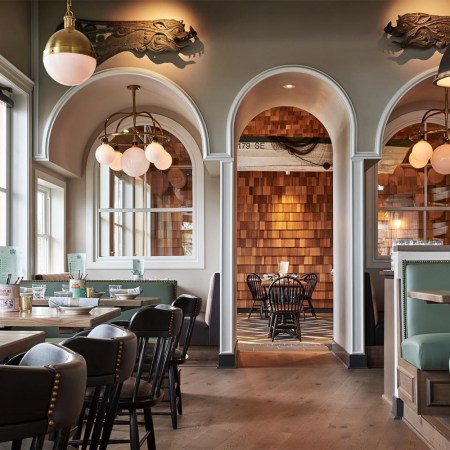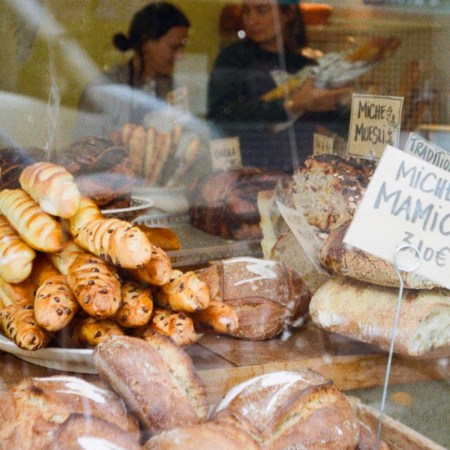It’s an understatement to say that there has been a lack of leadership at every level in this country in response to COVID-19, but in no other city are the divisions as apparent as they are in Austin, Texas, that little drop of blue in an ocean of red. And many local restaurants — among the businesses hit hardest by this pandemic — believe the government response, especially in terms of their businesses, couldn’t have been more convoluted or more poorly executed.
“Literally the only way 2020 could have been a worse year for hospitality is literally if a meteor came down and only knocked out restaurants,” says Eric Silverstein of The Peached Tortilla in Austin.
The story goes like this: On May 1, the Governor of Texas, Greg Abbott, initially allowed restaurants to reopen at 25 percent capacity, despite being taped on a private call saying reopening the state would “ipso facto” result in a spike of cases. Austin Mayor Steve Adler responded by extending the Austin stay-at-home guidelines, which still banned social gatherings but called for contact tracing in restaurants and the requirement of face masks, with possibility of penalty. Soon after, the Attorney General of Texas issued a letter to the Mayor of Austin and County Judge stating that local officials’ reopening requirements — “such as tracking customers […] and penalties for not wearing masks” — were “unlawful and unenforceable,” and strongly suggested that “local officials act quickly to correct any orders that unlawfully conflict with Texas law and Governor Abbott’s Executive Orders.”
As of this writing, restaurants have been allowed to open up at 50 percent capacity, and as of Memorial Day weekend, bars have been permitted to open at limited capacity too, while dancing remains “discouraged.” We have yet to see the results of what reopening has looked like, although Texas did see a spike in new cases on May 27, which was also one of the highest days of reported deaths thus far.
In spite of this intrastate turmoil akin to Footloose, some restaurant owners remain independent as ever. Maria Corbalan, the owner of Maria’s Taco X-press, insists that it’s too early to reopen. She wants to prioritize the health of anyone in her restaurant, whether that’s her employees or customers. In response to the Attorney General’s letter on behalf of the Governor, she laughs and tells InsideHook, “They can both kiss my ass.”
Despite the economic burden that an extended layoff infringes upon them, there are a fair number of restaurants in Austin keeping their dining rooms closed and sticking to delivery and curbside takeout. But the restaurants where this seems to be most feasible are taquerias, fast-casual places similar to taquerias (e.g., pizza shops) and major, established restaurants like Franklin BBQ. Corbalan says she still needed the PPP loan and “would’ve gone under without it,” but that curbside takeout “is enough, for now,” and that she’s “fortunate [her] business model allows [her] to stay closed until the dust settles.”
In addition to grab-and-go places, restaurants with outdoor spaces have been thrown a life raft, too. Many people, including UCSF epidemiologist Dr. George Rutherford, believe it’s “safer to dine at a place outdoors, where there is no air circulation coming from an air conditioner, and where there’s more room to safely social distance.”
And while the decision to dine out, even at restaurants with established social-distancing measures, remains a personal choice, what this crisis has highlighted most is this: while we love restaurants because each is so uniquely transportive and singular, it is this very quality that has led each one to be so expressly and, in turn, disastrously affected by this crisis.
Cisco’s, which has been open for 72 years (“the oldest Tex-Mex spot in Texas”), is “rolling with the punches,” according to third-generation owner Matt Cisneros. He’s trying to keep the family business alive and see “the glass half-full.” While the 50-percent capacity allowed by the governor is not really profitable for business, Cisneros argues that what’s more important now is that the restaurant is “getting some revenue in, along with reestablishing trust with the consumer.”
Restaurants have gone in an infinite number of directions. Some, like L’Oca d’Oro, have transformed themselves into food pantries for the local community, serving meals to children in need who no longer have schools to attend, while others, like Salt & Time, look more like gourmet markets. Still others, like Emmer & Rye, have become picnic spots, with the remaining share either encroaching on the sidewalks to increase the space of their outdoor dining areas or throwing caution to the wind altogether and opening their dining rooms at 25- or 50-percent capacity.
Whether a restaurant has stuck with takeout or opened up to some extent, the issue is so nuanced that it’s impossible to blame restaurant owners for their choices, no matter what they decide.
“As a restaurateur in Austin you get rocks thrown at you from both sides,” says James Beard-nominated Chef Kevin Fink of Hestia and Emmer & Rye.
“No one is sticking their nose up at anyone who had to open up immediately,” adds Jeffery Stuffings, the owner of Jester King Brewery.
At the end of the day, there’s simply no uniform answer for every individual business.
“People who think you should reopen chastise you for not doing so faster. And if you do open, you have the other side saying you shouldn’t reopen, that it’s not safe,” argues Johnny Livesay, the culinary director of Salt & Time.
The world we’re living in has always been rife with contradictions and paradoxes, but the pandemic has brought them to the surface. So much so that some are viewing now as an opportune time to make changes to an industry that has been in desperate need of reform for a while.
“You’re never going to have a hard reset like this again,” insists Livesay. “We’re taking this time to really assess our business model and encouraging others to do the same.”
With more time on their hands, almost 100 restaurants have come together via Zoom to form Good Works Austin, an advocacy group seeking to reform the restaurant industry in Austin while also creating a unique space for collaborating on how to best adjust business models in order to make restaurants more profitable, viable and nimble moving forward. The group includes some of the biggest players in Austin, including Franklin BBQ, Odd Duck, Hestia and plenty more.
The group began in 2018 and initially hoped to establish a paid sick leave ordinance for restaurant workers in Austin. In light of recent events they’ve shifted their focus to establishing uniform reopening protocols in a city where the guidelines remain unclear and are less restrictive than they probably should be. They are hoping that through this break we’ve all taken from restaurants, people will realize the importance they have not just on our psychology and in our lives, but the positive role they play in our community, both economically and socially.
“It’s easy to forget that restaurants have more value than just the meals they offer. Restaurants are a meeting ground of ideas, they are where business happens, where bread is broken, and where communities come together,” says Fink.
While some of the guidelines laid out by the group are what you might expect, like facemasks, minimizing occupancy and having customers sign a declaration of health form before entering, other measures are more extreme and proactive. The contact-tracing waiver is one of them; another — perhaps the most controversial — mandates service charges on every bill.
“We’re adding a necessary service charge, but we’re doing it so that we can afford to give our employees a living wage and healthcare benefits,” says Adam Orman of L’Oca d’oro and a spokesperson for Good Works Austin. “We’re trying to show folks that the health and wellbeing of our workers and employees is really in the community and individuals’ best interest, especially now.”
While restaurants remain unsure of what’s out there and understand the risk associated with reopening and potentially having to shut down again (which would be a “death blow”), Orman insists he’s not too worried.
“If we were all left to our own devices, we’d have nothing to fall back on. The goal here is to create coordination among local institutions that we can all stand behind and use to advocate for our industry as a whole. We’re trying to be proactive so that if something like this happens again, we’ll be more prepared. We hope other cities will follow suit.”
This article was featured in the InsideHook Texas newsletter. Sign up now for more from the Lone Star State.






















